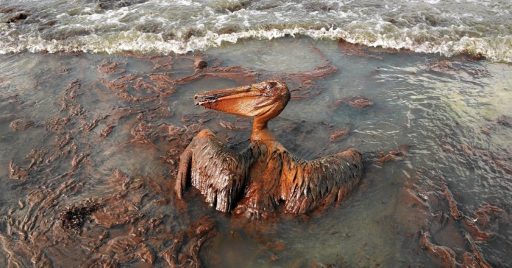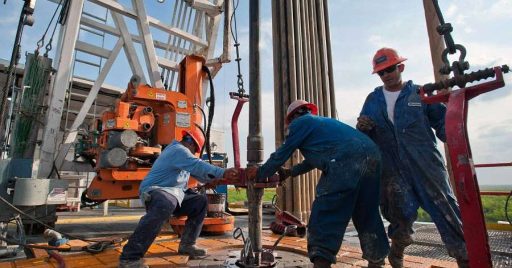Oil rig safety is one of the most critical concerns in upstream oil and gas industry duo to the historical high rate of fatal and non-fatal accidents.
According to the data from BSEE, there was 47 fatalities and 3335 injuries between 2007-2019 just in the offshore oil rigs of US! Although according to IOGP the number of fatalities decreased worldwide in 2020 from 25 to 14, but injury even to one limb is still a big loss.
The reason is of course the high volume of oil that is present at any given moment. A small spark can ignite a devastatingly fire or a leak can cause massive oil spill. On the other hand, a lot of staff are working on oil rig that are at risk and also subject to human error. The effect of all hazards will mostly impact the surrounding environment with long term consequences. The cost of it all is also devastating for investors.
In this article, we will review oil rig safety regulations and violations so HSE students and professionals have a clear picture of their job perspective.
What are the top oil rig safety regulations?
There are various regulatory bodies in the world that control laws on drilling rig safety. At global level, there is International Labour Organization (ILO) who sets the rules for workplace safety. EU also has its own regulations. There are associations such as IOGP and API that maintain safety standards. But at National level, it is workplace safety organizations such as OSHA that directly deal with regulations and violation cases.
The foundation of regulations are the same in all countries in order to protect workplace safety so humans and environment are saved. but according to technological developments or recent accidents, adjustments are made.
For example, the offshore drilling industry was regulated in the 50s but in the wake of 2010 BP DEEPWATER HORIZON oil spill in Gulf of Mexico that had 11 fatalities and numerous non-fatal injuries, some changes were made so US Bureau of Ocean Energy Management (BOEM) and Bureau of Safety Environmental Enforcement (BSEE) became more involved.
BOEM is responsible for economical management of offshore resources but BSEE is responsible for safety and environmental oversight with training and environmental compliance programs included.
The updated Workplace Safety Rule indicate that offshore operators must have clear programs in place at the time of drilling to identify potential hazards. Clear protocols are also necessary to address those hazards. All phases of production, from well design and construction to operation and maintenance should have strong procedures and risk-reduction strategies.
The regulations govern human and organizational factors in following areas:
Organizational factor:
- Risk analysis and safety strategy should be reviewed periodically to update policies and their implementations.
- All workers must be trained regularly to implement safety protocols.
- Emergency exercises should be performed weekly so when the time comes, all staff are ready.
- All operations such as hot works should have adequate permits to prevent explosions.
- Functioning detection systems must be installed at all locations throughout oil rig for possible oil and gas leaks and smoke and fire detection.
- All operations must be performed under supervision to make sure safety regulations are implemented.
- PPE should be chosen based on most recent technology innovations so maximum protection is provided.
- Pre-defined access limits should clearly be communicated so only necessary number of workers are allowed at each operation or any specific location on site.
- Safety signage and markings should be visibly placed all over the site.
- Work shifts must be organized in a reasonable time frames to prevent exhaustion.
- Maintenance of all machinery and equipment must be performed regularly for proper working condition.
Human factor:
- All workers must wear necessary PPE on the rig at all times. They should check the functioning of equipment before each use.
- Standing under flying objects, suspended loads or swinging equipments are not allowed.
- Standing close to edges are prohibited when working from height.
- Traffic safety should be applied by both drivers and workers on the ground.
- Entering the red zone of rig floor is not allowed.
- Mobile phone is prohibited on oil rigs.
- Smoking is not allowed except in designated areas.
- Workers should follow specific instructions for each machinery and equipment.

What are the top oil rig safety regulations?
Violations of oil rig safety are leading cause of accidents. They are often resulted from organizational policies or human error.
Human error is blamed for 80% of accidents on oil rigs specifically offshore. Although the number is not exactly accurate but it is a critical factor nevertheless. However organizations also have a big role in violating safety regulations:
Organizational factor:
- Cutting safety budget to minimize costs and maximize profits
- Not preparing for harsh weather conditions such as storms and saltwater corrosion at offshore oil rigs or excessive heat at onshore site that can lead to equipment malfunction or structural collapse
- Inadequate well control that can lead to increased pressure and catastrophic accidents
- Not choosing equipments from the best of design for maximum functionality
- Not retiring malfunctioning equipments
- Lack of functioning PPE for all staff including fall protection, flame resistant clothing, hearing loss prevention, respiratory protection, material handling, hard hat, goggles, gloves and boots
- Not hiring adequate number of crew for safe distribution of tasks
- Not providing adequate fire extinguishers and suppressors
- Creating a culture of fear and blame for workers to report near misses and malfunctions
Human errors:
- Not wearing provided PPE as directed by HSE manager
- Entering no-go zones such as standing on drill pipes or walking between racks that can lead to slip and fall
- Standing on red zone of rig floor
- Getting too close to rotary table when it is rotating or drill string, kelly, tongs, chains and hoses that might strike and injure
- Standing on edges of elevated levels such as rig floor or monkey board that can lead to falling from height
- Standing under a suspended load or flying object specifically around cranes or catwalk
- Not holding proper footing and posture that can lead to strains and injuries
- Not paying attention to moving vehicles such as forklifts and trucks
- Smoking anywhere outside designated area such as near rig floor or fuel tanks that have a huge risk of fire and explosion
- Talking on mobile phone
- Not keeping guards and safety rails on all equipments
- Not complying with housekeeping common sense
- Not taking a break when needed after long shifts or heat exhaustion

Conclusion
Oil rig safety regulations are critical for workplace protection that results in saving workers’ life and environment while saving the investment too. They are often regulated by labour organizations in each country but international bodies also organize the standards.
Human and organizational factors (HOF) are the leading cause of oil rig safety violations that lead to injuries or sometimes fatalities and massive damage to ecosystem.
Current system uses human supervision which is essential but not enough. Because it is a grey area since the supervisors are human themselves and can make error. They are also limited to one location and can not oversee beyond their physical boundaries.
An Intelligent HSE system should incorporate real time monitoring that is working behind every CCTV camera in all locations at once. An innovative HSE solution is needed to reduce violations and enforce regulations to protect life.